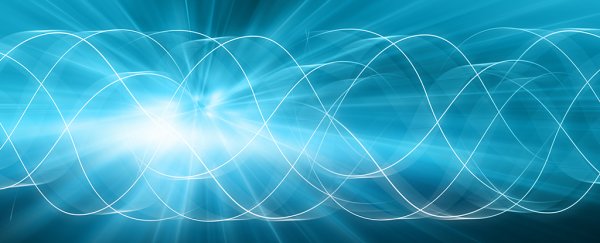The discovery of a unique property in what's known as a Majorana fermion has given researchers an easy way to spot the real deal from a fraud.
Such particles are famous for being their own antiparticle, a feature that makes them appealing candidates for qubits in certain kinds of quantum computers. But until now identifying them from look-alikes has been no trivial task.
A team of researchers, headed by physicists from Princeton University in the US, discovered that pairs of Majorana particles separated at each end of a line of iron atoms should have a distinctive spin.
Touching each particle with the tip of a scanning tunnelling microscope could then be used to reveal this property to reveal if they're bonafide or not.
Really, we should be writing it as Majorana 'particle'. Or, to really get our jargon on, a Majorana zero mode (MZM).
Unlike other fermions in the subatomic zoo, such as leptons and quarks, these exotic objects are quasiparticles, formed by the collective properties of electrons under certain conditions.
That doesn't make a huge difference in the end. Like other forms of matter and antimatter, MZMs would cancel out in a puff of energy if they were to mingle.
Ever since the theoretical physicist Ettore Majorana predicted the existence of neutrally charged particles that are also antiparticles in 1937, the race has been on to find one in the wild.
Electrons have antielectrons – or positrons – and quarks have antiquarks, but so far nobody has found such a single type of fermion that is two-in-one.
For most practical purposes, MZMs serve as the next best thing.
A robust type of quantum computing that uses the twisting paths of neutral particles through 2D space could be based on these quasiparticle version of the Majorana fermion.
The only catch is their production can result in an actual MZM, or some sort of quasiparticle that doesn't quite have the same goods.
This has made it tricky to confirm their existence in the past, so while hints of the quasiparticle have popped up over the years, it's only recently that physicists have been confident of its existence.
Several years ago, the researchers designed a method for producing MZMs in a single dimensional chain of iron atoms embedded on a lead crystal surface, forming what's known as a topological superconductor.
The resulting behaviour of the electrons in this iron wire under a magnetic field gave rise to a Majorana fermion quasiparticle at each end.
To be confident that the quasiparticles were in fact behaving like a pair of Majorana fermions, the researchers had to conduct a number of control experiments. Even then they still couldn't be certain the MZM wasn't a lookalike.
Now, they've demonstrated its spin property will stand out enough to act as a perfect signature.
"It turns out that, unlike in the case of a conventional quasiparticle, the spin of the Majorana cannot be screened out by the background," says researcher Andrei Bernevig.
"In this sense it is a litmus test for the presence of the Majorana state."
Spin is a quantum property that describes a particle's specific degree of freedom, a little like whether it can go up and down, or back and forth.
It's a particle's spin that can determine what category it belongs to.
The researchers used an instrument that brought individual atoms so close to one another, the vague positions of their electrons effectively jumped or 'tunnelled' through the empty space, creating a channel.
By manipulating the magnetic field of this scanning tunnelling microscope, this channel could respond to the spin of the particles and provide information on whether or not they were another kind of quasiparticle.
"Our aim has been to probe some of the specific quantum properties of Majoranas. Such experiments provide not only further confirmation of their existence in our chains, but open up possible ways of using them," says researcher Ali Yazdani.
No doubt we'll be hearing a lot more about this particle-antiparticle-quasiparticle in the future.
This research was published in Science.
